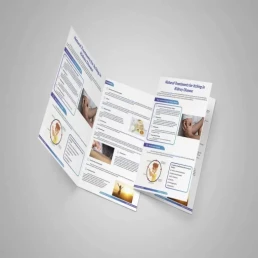If you’re wondering what causes kidney disease, environmental toxins play an important role. Emerging research is proving that the public is at risk for exposure to a wide range of chemicals as a consequence of normal daily activities. Many of these chemicals end up concentrated and excreted by the kidneys, damaging them significantly along the way. In this blog, we answer the question: what chemicals can cause kidney disease, and steps to decrease toxin exposure.

Toxins are lurking everywhere
More than 84,000 new synthetic chemicals have been registered with the US Environmental Protection Agency (EPA) over the past 40 years. The agency tracks 775 chemicals on their “toxic release list.” These chemicals are known to cause acute or chronic human health conditions. Many of these chemicals find their way into our tap water and our produce. They are used in food processing and textile and household maintenance products. They are even present in medical and dental tools and implants.
Ten steps to decrease exposure to harmful chemicals that can cause kidney disease
So, short of living on an isolated island away from any civilization, we are all exposed to these toxins to some degree. Since these chemical exposures are inevitable, it is important to take every step possible to decrease them. These steps include:
1. Avoid using pesticides and herbicides in your home and garden: many of these contain harmful chemicals that can lead to kidney damage and decreased renal function. In this study of the National Health and Nutrition Examination Survey (NHANES) database, a commonly used pesticide was linked to chronic kidney disease. Glyphosate, which is used in a common commercially available herbicide, has been linked to CKD in Sri Lanka. To date, there are no data about it in the US.
Join us in the fight against kidney disease and receive the FREE Report “5 Pitfalls to Avoid When Caring for Kidney Patients”
2. Filter water with reverse osmosis (R/O) and carbon filter: Sadly, most of these chemicals have made it to our tap water. The Environmental Working Group studies water quality in various regions of the US. By plugging in your zip code here, they give you a report of the chemicals present in your city. Installing a R/O and carbon filter in your house will remove the majority of these chemicals. If installing a whole R/O unit is too expensive, try using a high-quality water filtration pitcher such as Clearlyfiltered.
3. Use non-toxic cleaning products: Many cleaning products contain volatile chemical compounds that are especially irritating to the eyes, throat, and lungs. But many chemicals that are present in these cleaning products are also linked to kidney disease.
4. Use nontoxic building materials and carpets whenever possible: Many building materials and carpets contain toxic chemicals such as arsenic and perfluorinated compounds that have been linked to kidney disease. For a list of chemical-free building materials, check out this link.
5. Use “natural” cosmetics, nail polish, and fragrances: Investigators in Beijing looked into the manifestation of chronic mercury poisoning in 172 patients. Of these patients, 26.74% had kidney injury and three out of four were women. The most common source of exposure leading to kidney disease was cosmetics. Use the Environmental Working group (EWG) database to guide you with your cosmetics choices.
6. Consider “organic whenever possible” in food but prioritize organic meat and dairy. Many food products are contaminated by pesticides, herbicides, and other chemicals that are present in the soil. However, we understand that eating all-organic can be expensive. You can depend on the EWG, which publishes an annual list of the “Dirty DozenTM,” the shopper’s guide to pesticides in produce. You can purchase their list of the “Clean 15TM.”
7. Be careful with consumption of large predator fish: Ciguatera is a toxin that naturally occurs in algae. Fish that eat the algae become toxic. The effect is amplified up the food chain so that the largest predatory fish are potentially the most toxic. While Ciguatera is not directly toxic to the kidneys, it can lead to severe GI symptoms that can cause dehydration and acute kidney injury. More concerning, though, is mercury in the fish. Chronic mercury poisoning can lead to nephrotic syndrome, a kidney disorder that causes the body to excrete too much protein in the urine. Limit your consumption of fish to no more than two servings a week.
8. Do not get amalgam fillings and/or consider removal: Here again, there is the potential exposure to mercury leading to kidney injury. Amalgam fillings release low levels of mercury in the form of a vapor that can be inhaled and absorbed by the lungs. According to the FDA, the highest risk population are children, pregnant and nursing mothers, patients with neurological and kidney dysfunction, and those who are sensitive to mercury. Remove mercury fillings only under the care of a dentist specifically trained in this technique and who is aware of the risks.
9. Avoid living near highways: Living near heavy traffic is associated with higher exposure to air pollution. PM 2.5 refers to particulate matter that is up to 2.5 microns in size. Because of their small size, they are considered to be the worst of all air pollutants. They reach the alveoli of the lungs and enter the bloodstream. This studylooked at the link between PM 2.5 and chronic kidney disease (CKD) in the twin cities area of Minnesota. Researchers found that the risk of CKD increases with higher levels of PM 2.5. This remained true after adjusting for all other variables.
10. Clean furnace filters regularly; consider an air purifier: Air pollution is not limited to outdoor exposure; 4.1% of global deaths are attributed to indoor air pollution. According to the EPA, fuel-burning combustion appliances, central heating, and cooling systems, and humidification devices are some of the major causes of indoor air pollution.
The bottom line on environmental chemicals and kidney disease
Environmental toxin exposure is associated with poor kidney health. There are steps that you can take to limit your exposure as much as possible. Some of these steps may not be available to you at this time or may not be easy to implement all at once. The goal is to lower the overall burden of chemicals that can cause kidney disease. It takes time. Start with one of the steps here and refer back to this guide as you gradually incorporate each of these ten steps to reach a cleaner living and healthier kidneys.
In this new category, we will post once a month practical tips and tricks for healthy living with kidney disease. Consider these as tools that you can modify according to your unique situation. These tools span across our principles of Integrative medicine approach for kidney disease, including genetics, environmental exposure, gut health, lifestyle and others. We invite others to contribute to this category. If you are interested in contributing, please contact us info@inkidney.com.



